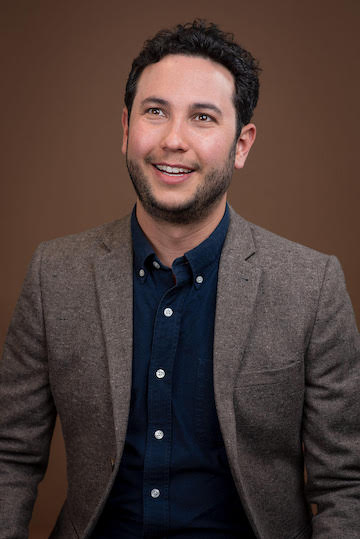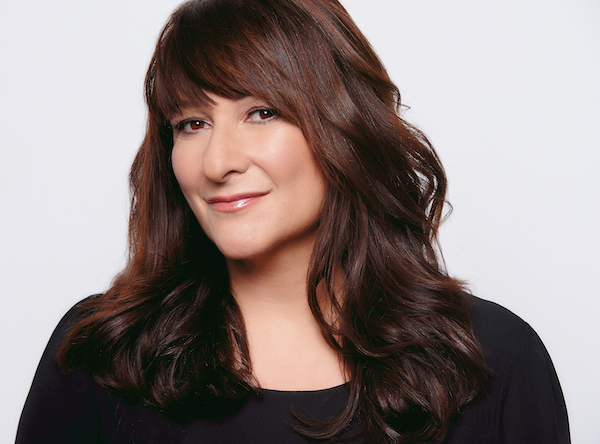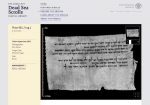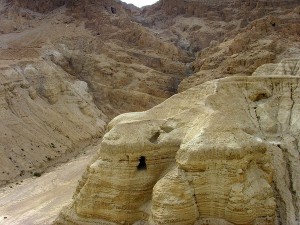The special Chutzpah! Festival edition of The Debators will be moderated by Kate Davis. (photo from Chutzpah!)
This year’s Chutzpah! Festival opens with a bold question: “The Ten Commandments. Holy Moses, is it time for some new ones?” And the audience at the Rothstein Theatre Nov. 2 will be the ones to decide which comedian answers the question best at the special festival edition of The Debaters.
“As holder of stage rights for The Debaters comedy format, I have been presenting non-CBC stage productions for awhile, all with radio host Steve Patterson as moderator. These have been very successful, but I’ve also been keen to produce stage versions for specific audiences in different communities,” show creator Richard Side told the Independent. “This Chutzpah! Festival is the perfect opportunity to do that with a cast of comedians and a debate topic that will really connect with the audience and with [artistic managing director] Jessica Gutteridge’s vision for the fest.”
Debating the topic at the Rothstein Theatre will be comedians Jacob Samuel and Charlie Demers, and comedian Kate Davis will act as moderator. But the event won’t just be about making jokes.

Demers, a Debaters regular, shared “his bona fides for this event” with Side: “I was team captain of the Canadian delegation to the World Schools Debating Championships in Jerusalem in 1998; you can also say that I am a novice Anglican Third Order Franciscan.”
“The 3rd order Franciscan movement,” explained Side, “is a group that includes religious and lay people who try to emulate the life of St. Francis of Assisi…. As for how it relates to the topic of the Ten Commandments – [Demers] is arguing that the 10 commandments do not need revising so, along with the jokes, I am sure he will have some heartfelt points as well. And that is why I thought him ideal for a comedy debate that was not going to just ‘roast’ the commandments but also might have some insight in it, too. Facts and funny is what The Debaters is all about, laughs – and logic.”
Samuel, who is Jewish, is on the other side of the argument. First appearing on the CBC radio show about six years ago, he told the Independent: “Preparing for The Debaters is always a combination of excitement, stress and wracking my brains on how to squeeze jokes out of a given topic. I do a lot of brainstorming, writing and rewriting, and pacing around going over my arguments out loud. For the Chutzpah! show I’ll be preparing as I always do. However, I am doing maybe a bit more research than I would normally do to try to be as accurate as possible when it comes to the Torah and Jewish beliefs. I think it’s fair to say that this audience may be a bit more knowledgeable about Judaism than the average crowd.”

Jewish Independent readers will be quite familiar with Samuel, whose one-panel cartoons the paper has published and whose comedy career the paper has followed.
“I think the last time I was in the Jewish Independent,” he said, “it was to promote the recording of my debut comedy album in late 2019 (what a time that was!). Well, it turns out, I won a Juno Award for that very album in 2021. I also got married and now have a mini Bernedoodle named Mendl who, to me, is also Jewish (he’s loud, anxious and has a very sensitive stomach).”
Samuel has learned a lot since his first time on The Debaters, which was at the 2017 Winnipeg Comedy Festival. “The debate was about emojis,” he said. “I thought it would be really subversive and clever if I held up giant emoji printouts for my closing argument – not the greatest idea for an audio-only show but, hey, it was my first time on radio. Luckily, they had me back and enough times that I often lose count.”
Davis, a member of the Toronto Jewish community, is also a Debaters veteran.
“My first Debaters,” she said, “was in 2007 in London, Ont. – ‘Should dads be in the delivery room?’ Of course, I was for this, as dads are the ones who got us into this mess in the first place.”
For Davis, being a mom is not just part of her private life, she incorporates it into her writing and gives parenting workshops, too, as well as talks on various related, and unrelated, topics.
“I love performing comedy and my speaking is my comedy and everything I believe in,” she said. “Over the years, I have created four different keynotes on work/life balance, connectivity, mindfulness and mental resilience, all of which I hope contribute to a healthier, happier life. Whether I am writing my comedy, books, scripts or a keynote, I find being multifaceted is like going to the gym – you don’t just work out your arms. Each one contributes to each other. I might write an article and think that’s a great joke and try that in my standup.”
Davis said she is “super-excited to be moderator for The Debaters – Chutzpah! Edition” that stars Demers and Samuel.
“I know what great comics they are and, honestly, I think moderating is being a great listener and keeping things going. But, let’s be honest,” she said. “I am pretty excited for the puns!!! Also, to prepare, I will be eating as many matzo balls as I can.”
For tickets to the The Debaters – Chutzpah! Edition (which is not a CBC-affiliated production and won’t be recorded for broadcast), visit chutzpahfestival.com. A portion of ticket sales will benefit the Jewish Community Centre of Greater Vancouver’s inclusion programs.




